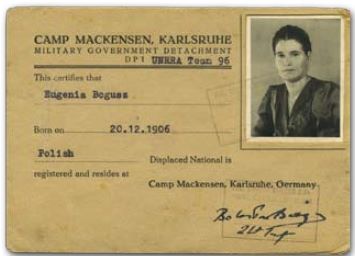In the end of the war a lot of documents where issued in Germany, occupied by the Allied authorities. These documents generally ratified registration, entry cards, temporary identification documents, identity cards, etc. International institutions and countries of the Allied occupying army helped millions of people who at the end of the war were found in the German territories. On November 9, 1943 “Administration of the United Nations Relief and Reconstruction – in short, UNRRA was set up by the Allied Forces. It was partly concentrated on the most affected populations in countries that were on the Allied side and functioned until 1947 (from 1945 within the UN). UNRRA activities included minimal humanitarian-aid, helping with social and economic reconstruction, organization of special camps for the so-called “DPs” (displaced persons from the English). That is to say persons who as a result of the war found themselves outside their homeland and wanted to return or settle in a new place, and could not do that without help. Allied Documentation carried endorsements often marked by the PUR and social welfare institutions in the country.




in the case of forced laborers it is possible to divide the documents into institutional and non-institutional categories. The institutional documents were held by German Labor Offices and police authorities in the form of portrait photographs of identification (its characteristics discussed in the section in the document Arbeitsbuch) in identity documents and employment documents. The second category is an iconography of the “victims” – those photos document the daily life of forced workers, done mostly by German employers, supervisors, etc. Pictures made by “victims” were the exceptions because the forced laborers rarely had cameras during their deportation to Germany.